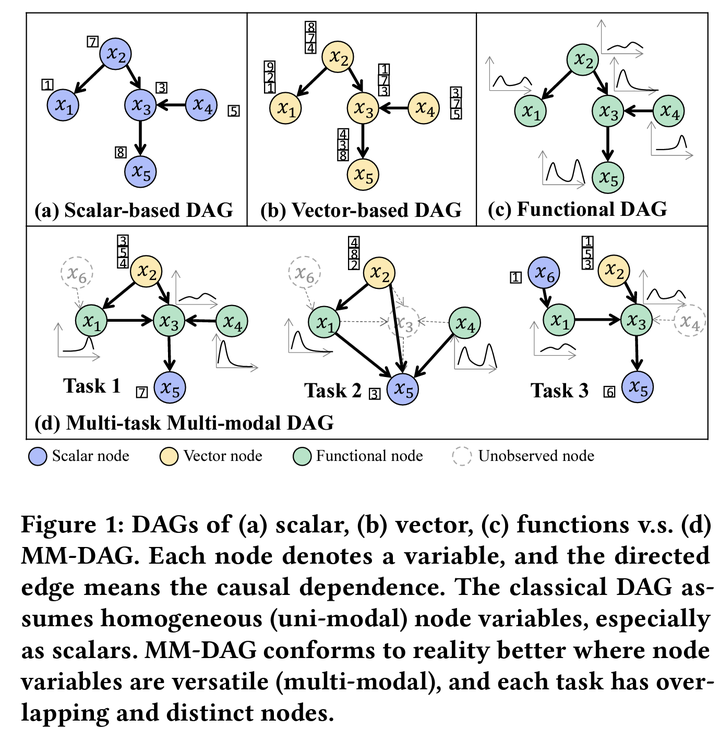MM-DAG: Multi-task DAG Learning for Multi-modal Data--with Application for Traffic Congestion Analysis

Abstract
This paper proposes to learn Multi-task, Multi-modal Direct Acyclic Graphs (MM-DAGs), which are commonly observed in complex systems, e.g., traffic, manufacturing, and weather systems, whose variables are multi-modal with scalars, vectors, and functions. This paper takes the traffic congestion analysis as a concrete case, where a traffic intersection is usually regarded as a DAG. In a road network of multiple intersections, different intersections can only have some overlapping and distinct variables observed. For example, a signalized intersection has traffic light-related variables, whereas unsignalized ones do not. This encourages the multi-task design: with each DAG as a task, the MM-DAG tries to learn the multiple DAGs jointly so that their consensus and consistency are maximized. To this end, we innovatively propose a multi-modal regression for linear causal relationship description of different variables. Then we develop a novel Causality Difference (CD) measure and its differentiable approximator. Compared with existing SOTA measures, CD can penalize the causal structural difference among DAGs with distinct nodes and can better consider the uncertainty of causal orders. We rigidly prove our design’s topological interpretation and consistency properties. We conduct thorough simulations and one case study to show the effectiveness of our MM-DAG.